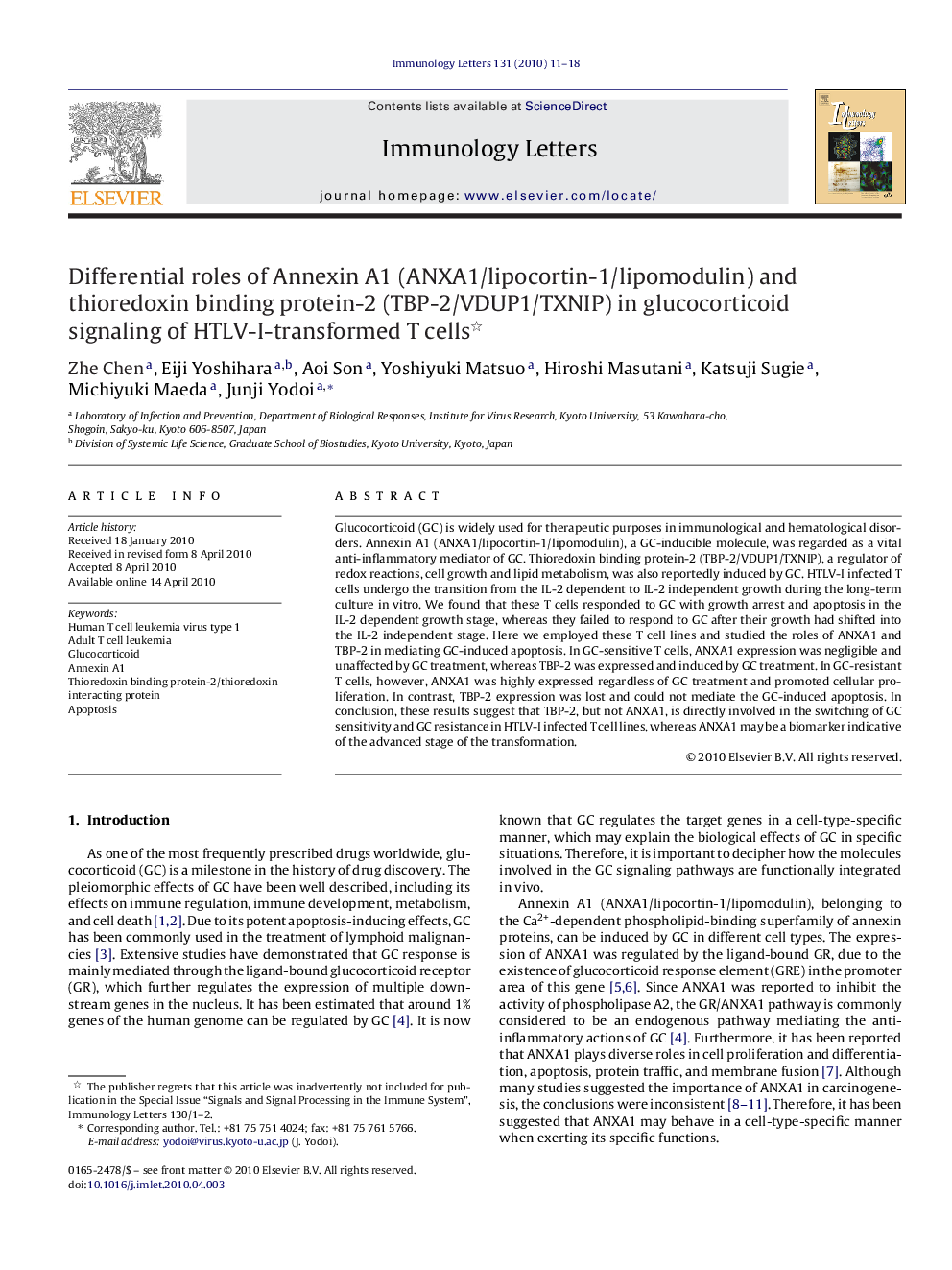| Article ID | Journal | Published Year | Pages | File Type |
|---|---|---|---|---|
| 3355862 | Immunology Letters | 2010 | 8 Pages |
Glucocorticoid (GC) is widely used for therapeutic purposes in immunological and hematological disorders. Annexin A1 (ANXA1/lipocortin-1/lipomodulin), a GC-inducible molecule, was regarded as a vital anti-inflammatory mediator of GC. Thioredoxin binding protein-2 (TBP-2/VDUP1/TXNIP), a regulator of redox reactions, cell growth and lipid metabolism, was also reportedly induced by GC. HTLV-I infected T cells undergo the transition from the IL-2 dependent to IL-2 independent growth during the long-term culture in vitro. We found that these T cells responded to GC with growth arrest and apoptosis in the IL-2 dependent growth stage, whereas they failed to respond to GC after their growth had shifted into the IL-2 independent stage. Here we employed these T cell lines and studied the roles of ANXA1 and TBP-2 in mediating GC-induced apoptosis. In GC-sensitive T cells, ANXA1 expression was negligible and unaffected by GC treatment, whereas TBP-2 was expressed and induced by GC treatment. In GC-resistant T cells, however, ANXA1 was highly expressed regardless of GC treatment and promoted cellular proliferation. In contrast, TBP-2 expression was lost and could not mediate the GC-induced apoptosis. In conclusion, these results suggest that TBP-2, but not ANXA1, is directly involved in the switching of GC sensitivity and GC resistance in HTLV-I infected T cell lines, whereas ANXA1 may be a biomarker indicative of the advanced stage of the transformation.
